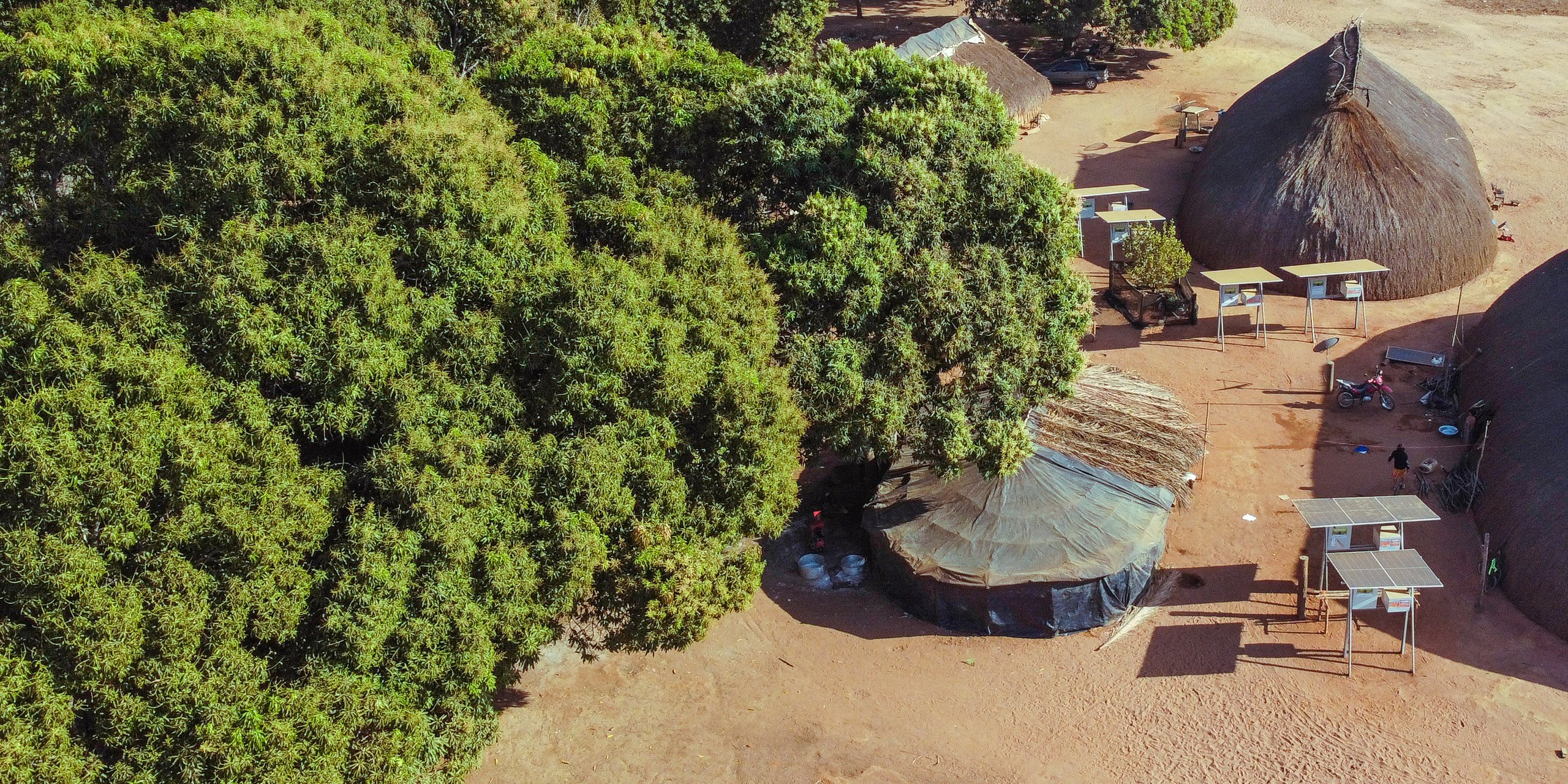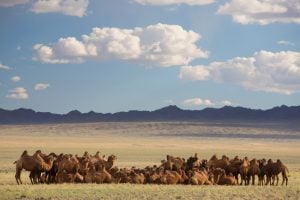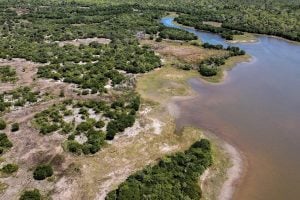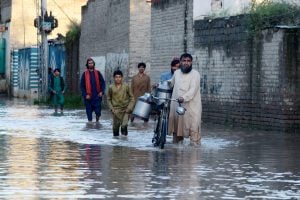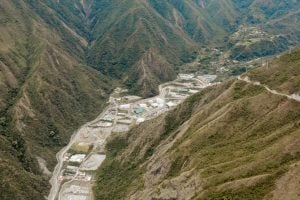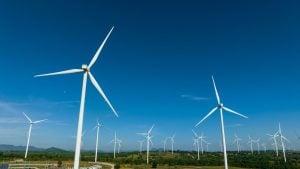At the height of the day, the relentless sun and heat of the Amazon plunge the village of Piyulaga into a sleepy silence. Those who aren’t fishing or harvesting manioc in the distance find refuge in the shade of thatched huts, with even the birds and insects seemingly taking cover.
It’s at dusk that life awakens in this village in the Xingu Indigenous territory, in Brazil’s midwestern state of Mato Grosso. Families appear at the entrance of their huts, which form a circle at the heart of the settlement. Children run around, riding their bikes and playing football, while the sounds of Brazilian country music echo out as the first lights come on.
Later, some gather around the television, others lie in hammocks engrossed in their mobile phones, while spotlights illuminate the communal area throughout the night. It would all be trivial if it weren’t for one detail: in August, when Dialogue Earth visited the community, such light had only been there for a month, thanks to the installation of new solar panels on each of the houses.
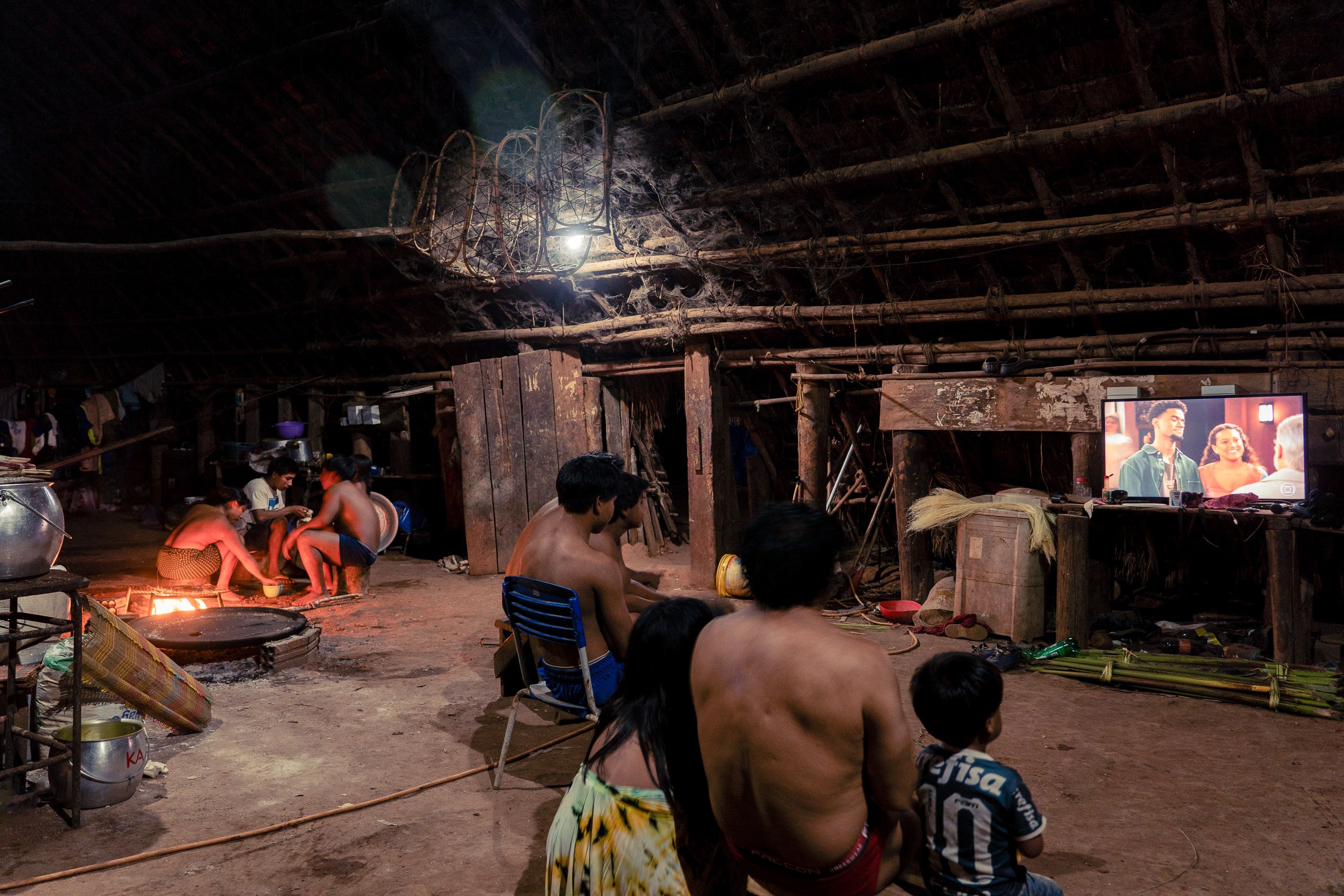
The Amazon regions of Brazil, Colombia, Ecuador and Peru – together home to more than 80% of the biome – have each country’s lowest levels of electricity coverage. Despite the Amazon being crucial for hydroelectric generation and oil extraction, the majority of the populations cut off from these countries’ national grids live in these regions. Deriving little benefit from the hydropower that flows from their own lands, these remote areas are widely reliant on more expensive and polluting sources, such as thermoelectric plants and diesel generators.
This lack of access to electricity has brought with it a string of deficiencies in essential services, such as health, education, water supply and communication, which are further reflected – and perpetuated – by the low development indicators recorded in many parts of these regions.
However, cases such as Piyulaga are showing that, in addition to the challenges, the solutions can also be shared, with solar energy helping to democratise electricity in the Amazon.
According to experts interviewed by Dialogue Earth, small solar systems are cheaper, have a smaller environmental impact, and require less maintenance than other sources, also avoiding emissions of polluting gases. In addition, they point to the Amazon’s high levels of solar irradiation as offering strong conditions for generation.
“In remote regions, the choice of solar energy has a universal consensus,” said Vinícius Oliveira, project leader at the Institute for Energy and the Environment (Iema), a non-profit organisation promoting public policies on energy and transport.
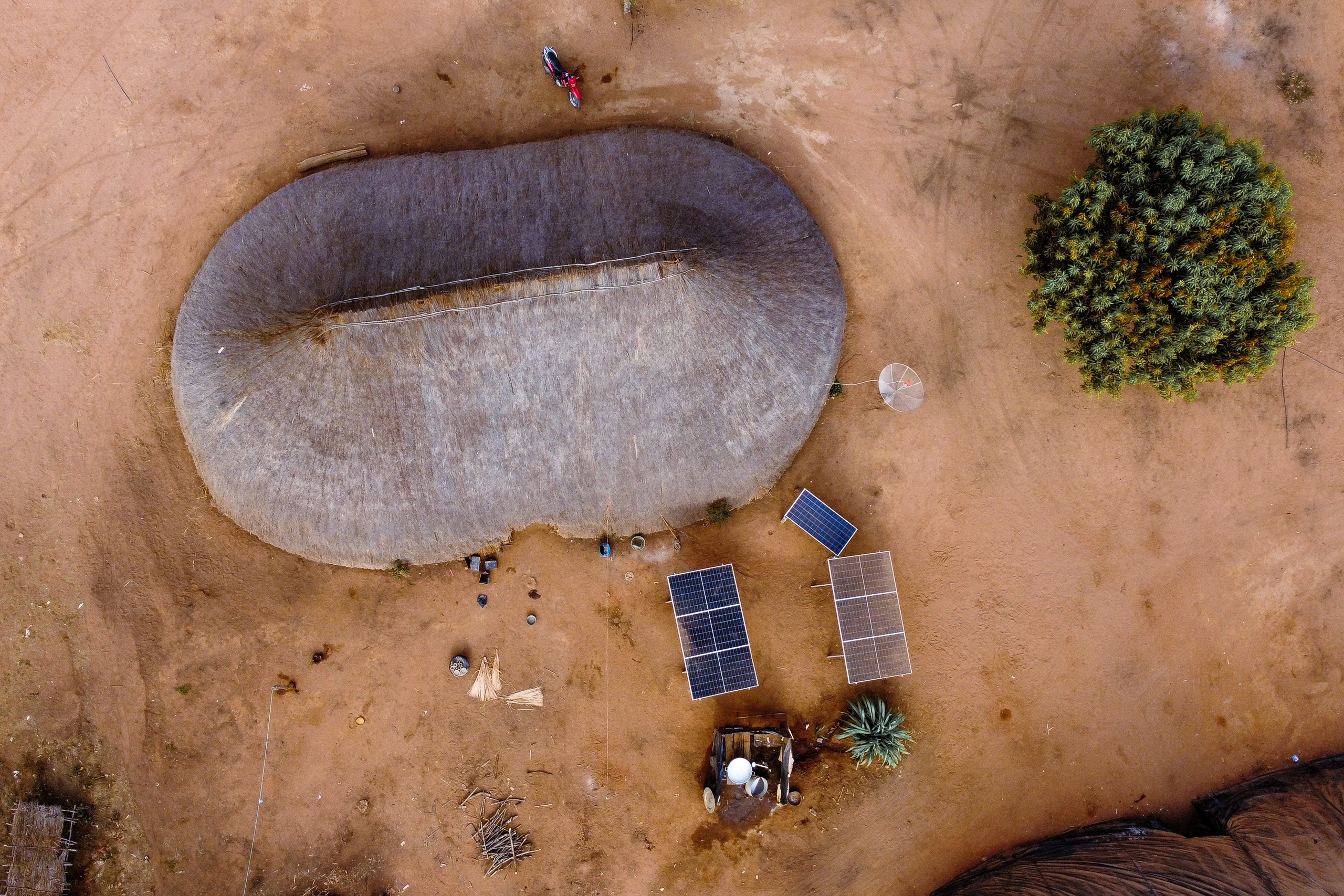
In recent years, solar projects have multiplied in communities in various Amazonian countries, mainly with funding from civil society organisations, according to Iema.
“But in order to solve the problem at scale, you need a lot of resources and a certain ‘commitment’… otherwise you become dependent on philanthropy,” said Oliveira. “This is only possible through public policies.”
Public policy advances in Brazil
Brazil’s vast electricity system, the largest in Latin America, brings together generation and networks from across its varied regions into a grid known as the National Interconnected System (SIN), which serves nearly 99% of its population. With the exception of the north-eastern island Fernando de Noronha, all of Brazil’s isolated systems that lack a connection to the SIN are located in the Amazon. This means that 3 million people, the majority in the region, depend on the supply from thermoelectric plants, and almost 1 million have only sporadic access to electricity, supplied mainly by diesel generators.
In 2020, the government of former president Jair Bolsonaro launched the More Light for the Amazon programme to expand renewable energy in isolated areas, but progress has been slow. By the end of 2022, 13,000 households, less than 20% of the 70,000 promised, were connected, according to an analysis by Dialogue Earth based on data from the Ministry of Mines and Energy.
In 2023, this initiative was integrated into Luz para Todos (Light for All), a flagship policy of Luiz Inácio Lula da Silva’s current government, launched 20 years earlier during his previous presidency and revived on his return to power last year. Since then, the process has accelerated: until recently, 31,000 homes – more than twice as many as in the previous programme – have been connected in remote areas of the Amazon, although this represents just over 10% of the new target of 228,000 units by 2026. Renewable electricity has already reached the villages of the Xingu territory, Brazil’s oldest Indigenous reserve, demarcated in 1961, and a forerunner in solar projects.
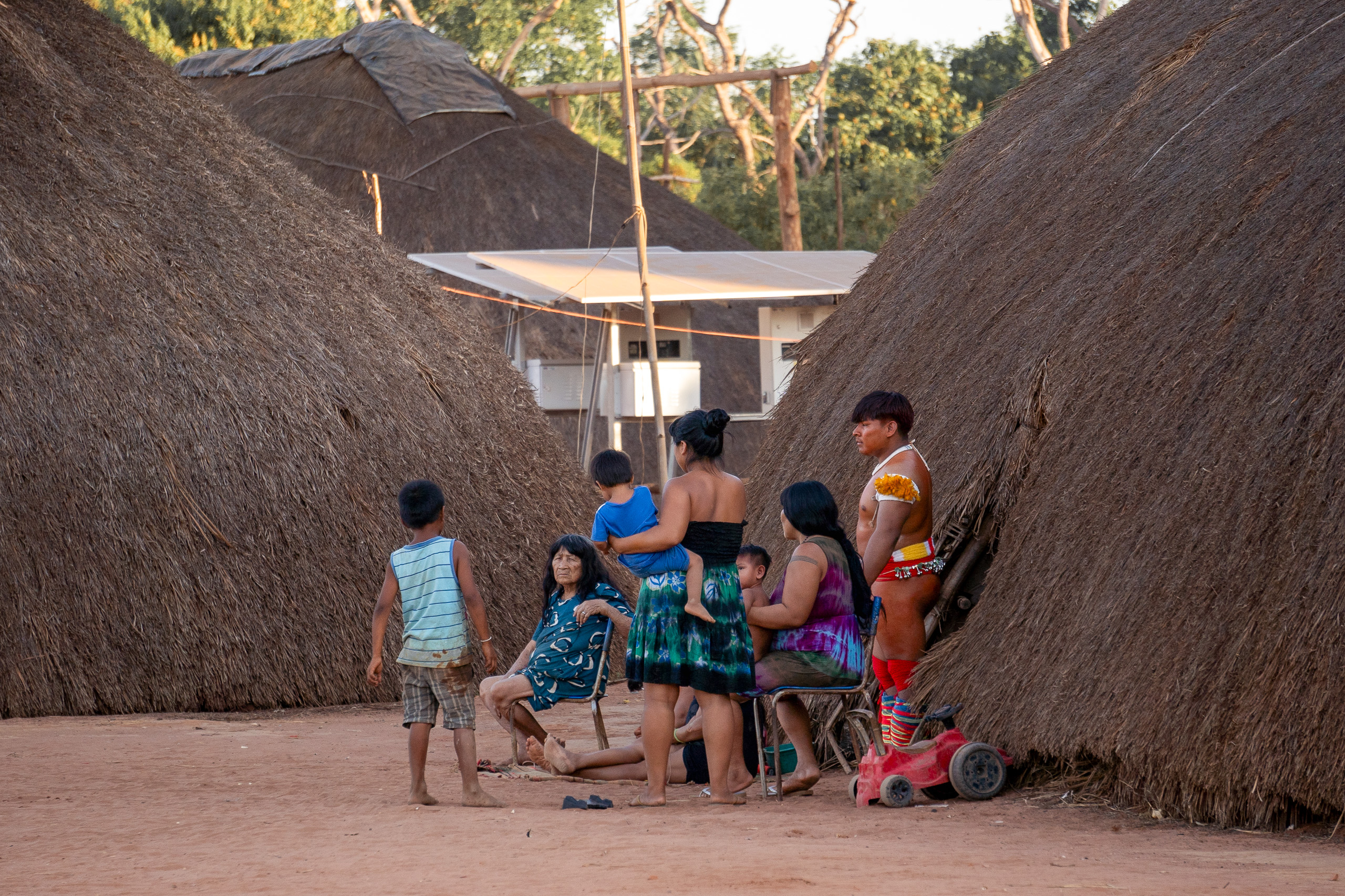
“We weren’t in favour of transmission lines within the territory,” says Watatakalu Yawalapiti, a leader in the Xingu Indigenous Association. “They change the aesthetics of the villages and cause deforestation. That’s why we started organising solar energy.”
In 2009, the Instituto Socioambiental (ISA), an environmental organisation with decades of experience working with the Xingu peoples, began installing solar panels at strategic points in the 2.6 million hectare territory, which until then had been massively dependent on diesel generators.
The project went from strength to strength in 2015, with new philanthropic resources enabling electricity to be extended to community areas in around 100 of its villages, according to the ISA. The initiative also supported technical training for Indigenous people to manage and maintain the equipment. “Everything was done to serve the collective,” said Marcelo Martins, an ISA agronomist, pointing out that schools, health centres and water pumps have since gained clean energy.
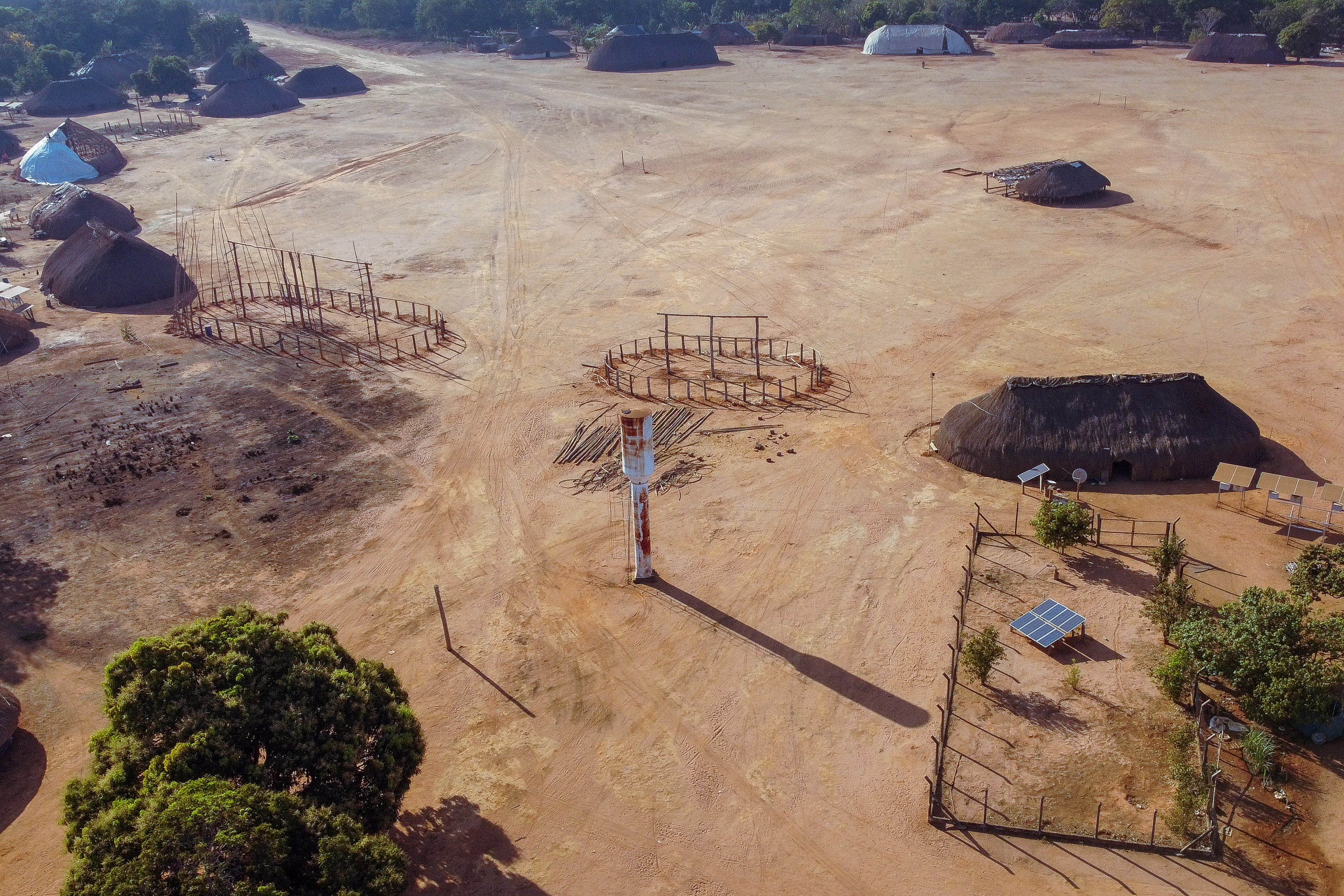
During the Covid-19 pandemic, electrification advanced due to the need for communication and to support health schemes, with many families buying solar panels on their own, reports Yawalapiti.
Now, solar energy in Xingu is entering a new phase: the local energy distributor, with funds from the federal government, is equipping each house in the village with panels.
Tapiyawa Waurá’s oca, the name for a typical Indigenous house, was under construction in the Piyulaga village in August. Trunks of corrugated wood held together by trusses awaited the thatched roof, letting the afternoon sun seep through the structure. Although his family could not yet settle there, solar panels were already providing energy to charge mobile phones and keep fish cool. “Before, they had to go straight into the fire,” said the man in charge of school lunches, taking a tucunaré fish out of the newly installed freezer. “Now I can leave them here for longer.”

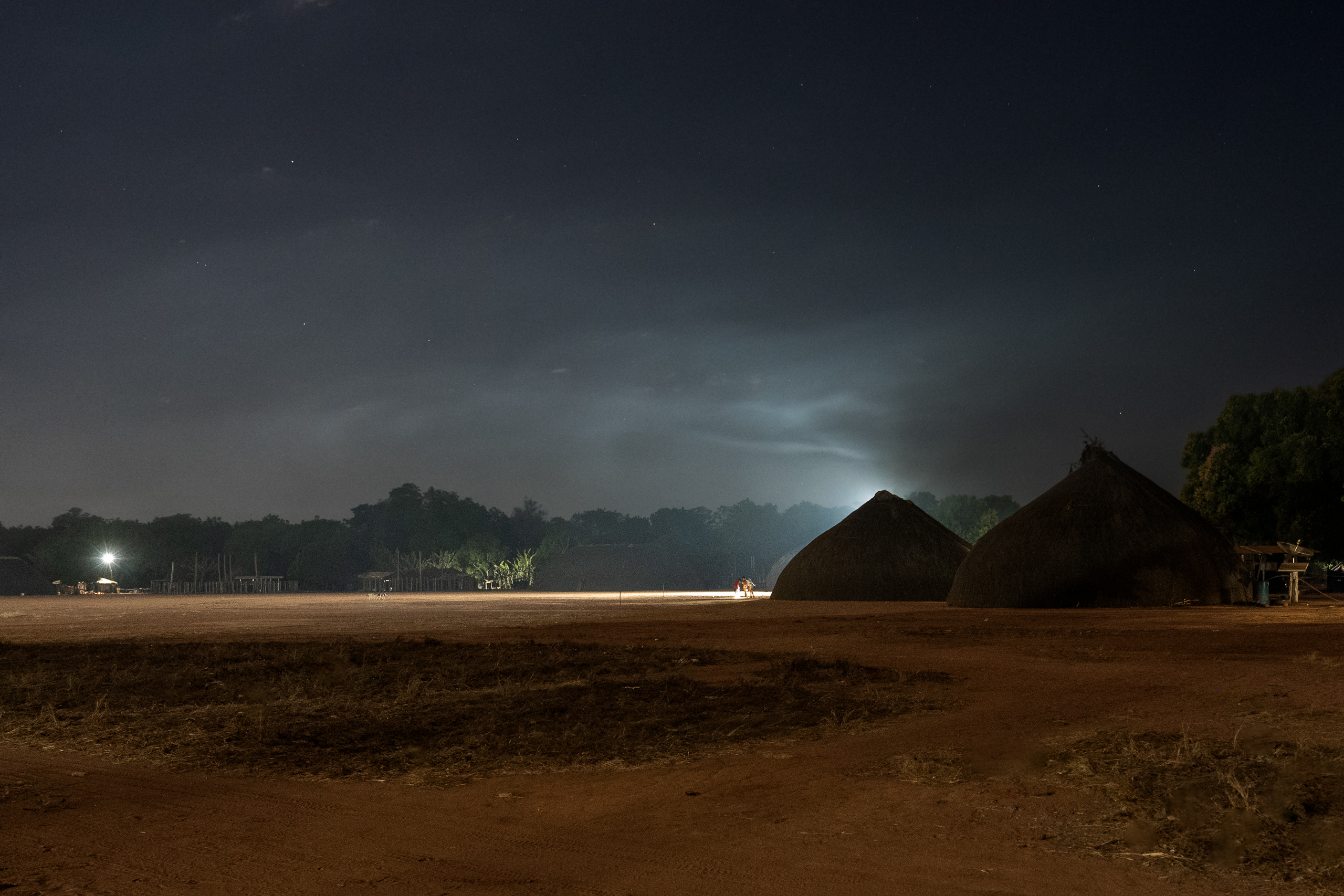
The freezer, mobile phones and spotlights are now among the community’s most used, and most valued, bits of equipment. Though the night sky is no longer as starry with the increase in artificial light, the solar panels’ replacement of many of the generators has brought quiet and taken away the smell of burning fuel, say residents.
One such diesel generator replaced by a solar panel has been at the village health centre. Here, Indigenous health worker Aragão Waurá provides primary care, such as taking babies’ temperatures and giving advice on simple wounds and inflammations. “If there’s a serious patient, we can contact the team at the hub by mobile phone and they’ll come here,” he said. These hubs are strategic locations within the territory that have facilities run by Funai, the government’s Indigenous agency, and health posts with more professionals and infrastructure.
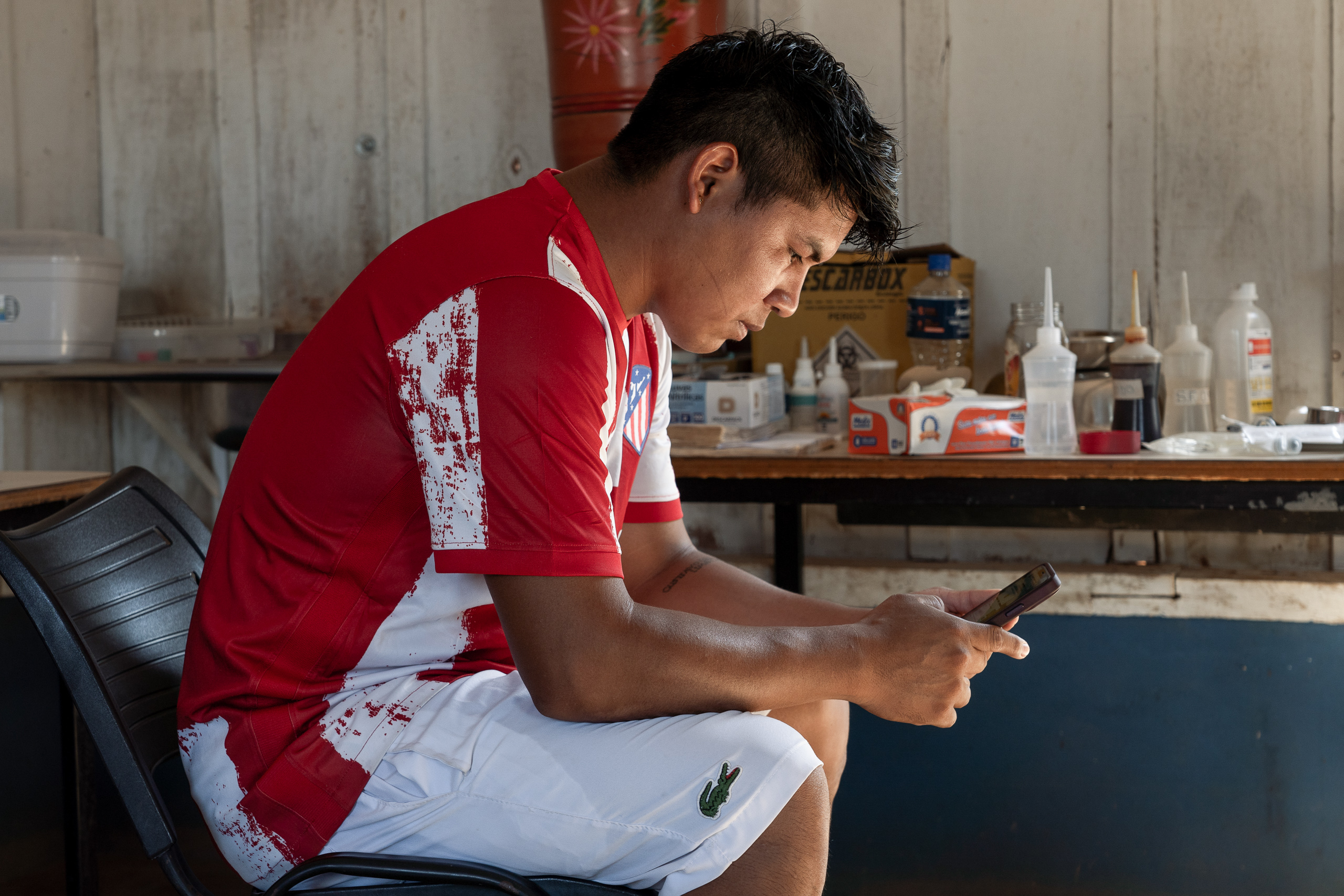
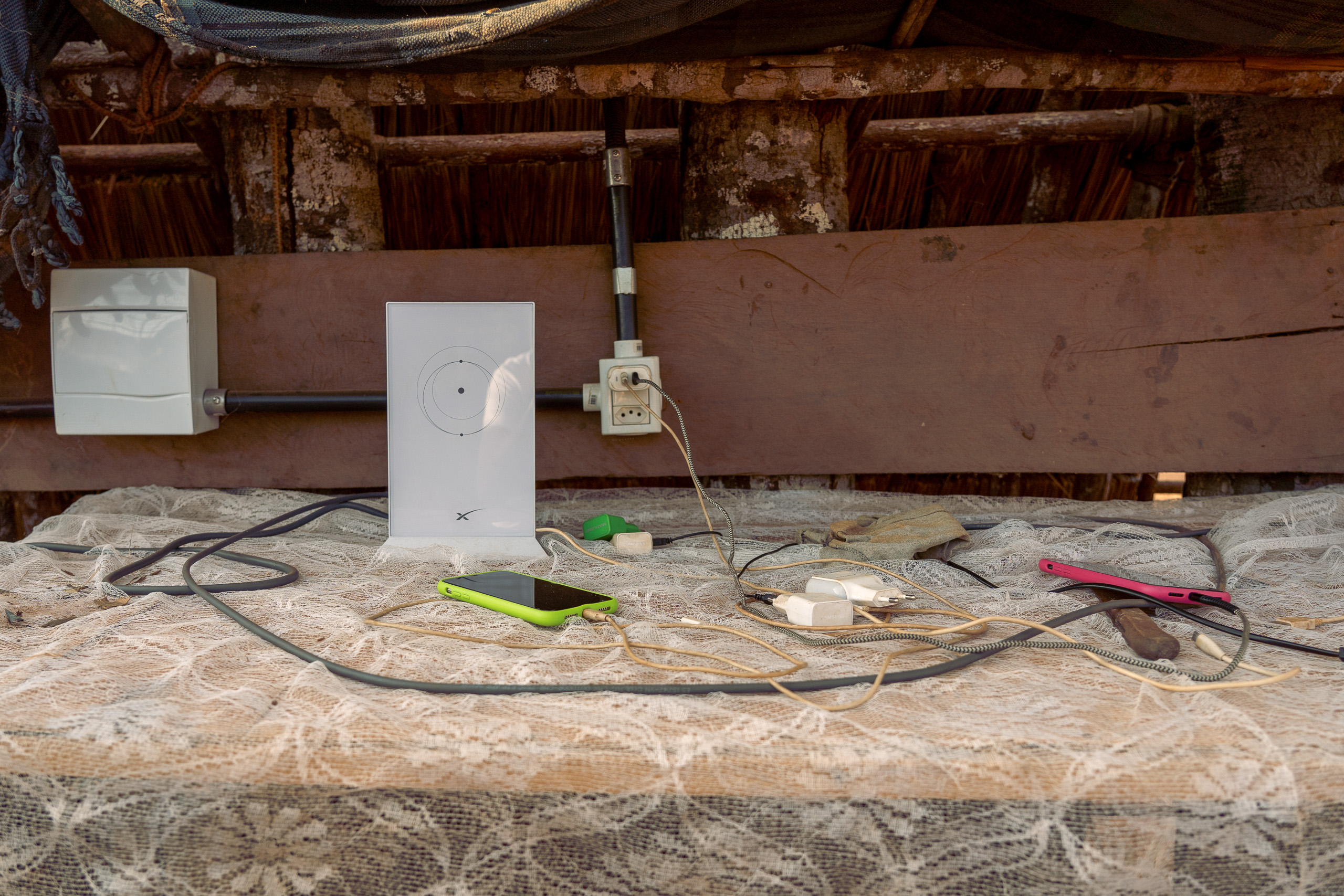
The telephone box in one corner of the village no longer works either. Mobile phones are in the hands of almost everyone, everywhere. This direct and unlimited connection to the internet in a place where until recently there was little access, and where the population maintains a strong language and traditional rituals, has brought with it some concerns among leaders, but they say that there is no turning back from this change.
“Technology comes with a problem, but it will be useful for those who are aware,” says Yanahin Waurá, president of the Tulukai Association, which operates in Piyulaga. “A lot of people crash their cars or get hurt on their motorbikes, but it’s not technology that causes this, it’s the person themselves. So we try to raise awareness.”
Promising initiatives in Peru and Ecuador
In the Peruvian Amazon, an initiative is taking advantage of the connectivity provided by solar energy to strengthen the protection of lands.
Since 2023, the Interethnic Association for the Development of the Peruvian Jungle (Aidesep) has been leading a project that instals solar panels and satellite internet in communities without access to electricity in Amazonas, Loreto and Ucayali, departments in Peru’s north-east. According to Julio Cusurichi, an Indigenous leader and Aidesep coordinator, these panels not only provide energy, but also guarantee communication in remote areas, strengthening surveillance and forest protection across large territories.
Cusurichi explains that they are integrating a platform that enables environmental activists to document territorial threats in real time. Each community has trained technicians equipped to record information using their cell phones. This data is then uploaded and stored on an online platform, directly connected to Aidesep’s national office.
The system has already been implemented in Loreto and Ucayali, and the database houses alerts regarding territorial invasions, conflicts with external parties, threats to leaders, and records of leaders who have lost their lives defending their land. Every incident is thoroughly documented and stored in this centralised system.
With the help of the equipment already installed, an analysis is being conducted to identify communities in each region that lack access to electricity or other sources of lighting in their homes. “The government isn’t interested in supporting services that will help communities, but solar energy is an alternative,” explains Cusurichi.
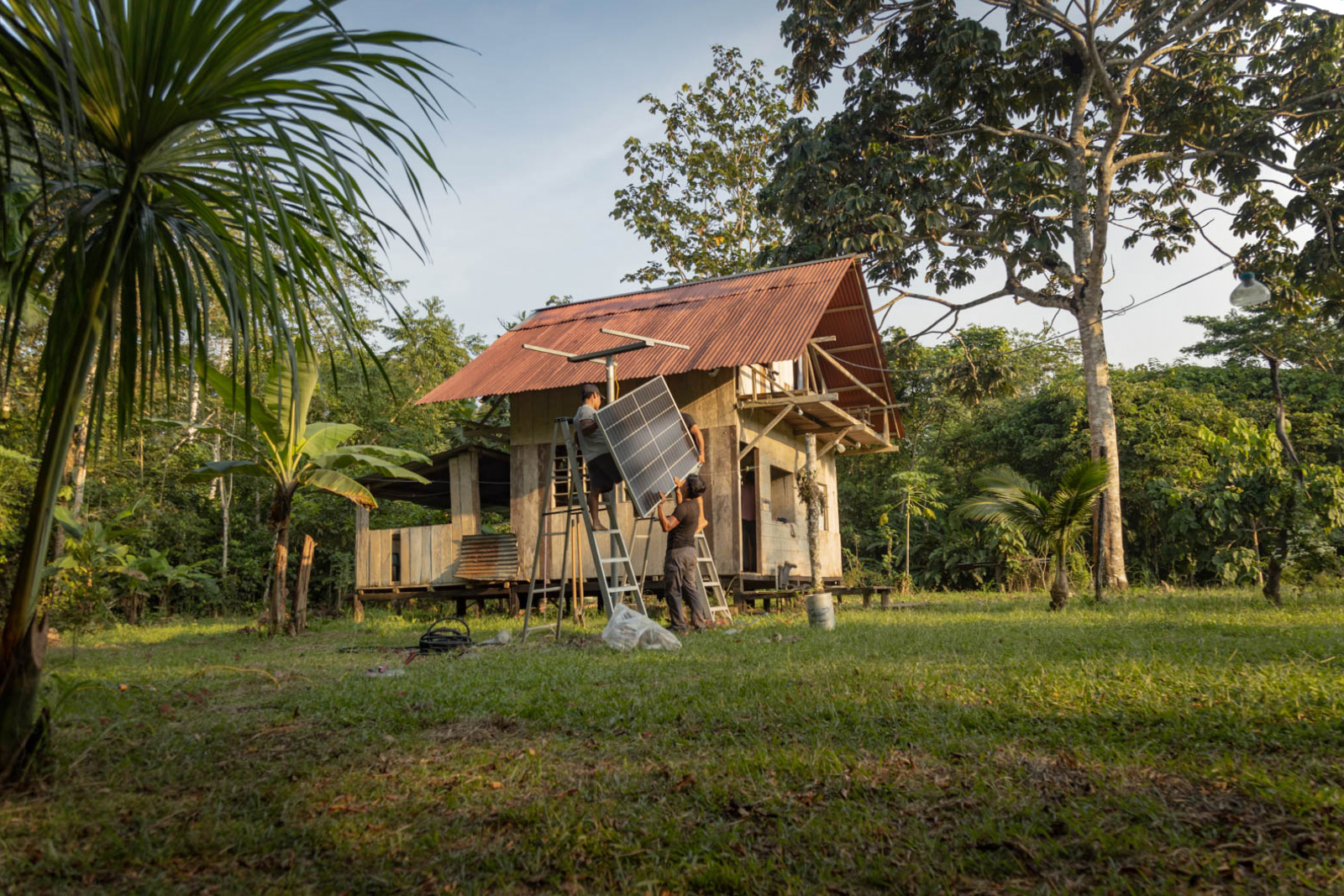
A similar project has also found success in the Ecuadorian Amazon. The Ceibo Alliance, an organisation that brings together the Secoya, Siona, Kofán and Waorani Indigenous peoples, has already installed 121 solar systems in 16 communities, allowing territorial guards to use clean energy to charge their drones, GPS and other surveillance equipment.
For example, agents from the Kofán community of Sinangoe in Sucumbíos province – a group that previously gained headlines for winning a historic case against mining concessions – are now reportedly able to patrol their territory thanks to the power brought by solar panels.
“We must implement projects that benefit [the communities], creating autonomy and without harming the environment and culture,” says Hernán Payaguaje, co-founder of the alliance.
Elsewhere in Ecuador, innovation has been seen in projects such as the Kara Solar Foundation, which operates solar-powered boats in Achuar Indigenous communities in the provinces of Pastaza and Morona Santiago. These boats facilitate the transport of people and goods, improving access to health and education services in remote areas.
However, as yet, these projects are making but a modest dent when compared to the challenge of replacing fossil fuel generators, which are still the main alternative in these regions, according to Eduardo Pichilingue, coordinator of the Peruvian division of Cuencas Sagradas (Sacred Basins), an alliance of 26 Indigenous organisations, activists and academics who have come together to protect the Amazon in Ecuador and Peru.
Although the Ecuadorian Amazon is home to most of the country’s oil blocks and its main hydroelectric dam, more than 70% of its Indigenous communities are beyond the reach of the national grid, echoing the situation of their Brazilian neighbours. The rate is similar in the Peruvian Amazon, which faces even more logistical challenges given that its territory is several times larger than in Ecuador.
Peru’s Ministry of Energy and Mines argues that this lack of supply is due to long distances, low electricity consumption in these regions, dispersed populations and their limited purchasing power – factors that make rural and Indigenous electrification projects unattractive to private sector initiatives, necessitating greater state support.
But for José Serra Vega, an independent energy and environmental consultant, the difficulty goes beyond logistics. “The Amazon is treated as if it were a distant or foreign country,” says the Peruvian expert. “There is no interest in the Amazon due to lack of knowledge and because its inhabitants have little political weight.”
A report by the Pachamama Foundation argues that Peru and Ecuador have great potential for developing renewable energies, but have not yet invested enough in the sector. “The cost of generation with solar panels is cheaper than with hydroelectric plants. The solution is there,” says Pichilingue.
Cost reduction drives solar energy
For the organisations and communities turning to solar energy, the recent significant drop in the costs of equipment and production has worked greatly in their favour.
According to the International Renewable Energy Agency, the price of solar per kilowatt hour of generation, taking into account all stages of building and operation, has plummeted in the last decade, having previously been significantly higher than other renewable sources, making it an ever more competitive option on the market.
This reduction is a direct result of China’s massive investments in the sector. Since 2011, the Asian country has invested more than USD 50 billion in expanding its photovoltaic manufacturing capacity, ten times more than Europe, the International Energy Agency reports. Today, China controls more than 80% of all stages in the manufacture of solar panels.
However, the geographical concentration of this production chain also brings challenges that governments are seeking to address. For China, oversupply and a resulting price war have caused smaller manufacturers to go bankrupt. In other countries, concerns have arisen over domestic industries’ ability to compete with Chinese solar products: in Brazil, for example, higher import taxes on Chinese solar panels and wind turbines came into effect this year, with such equipment having previously been taxed at a reduced rate, or tax-free, as a way of stimulating the energy transition – concessions that brought notable successes.
In Colombia, region faces blackouts
Isolated communities are not the only groups facing precarious access to electricity in the Amazon: in many cases, entire municipalities and sizable regions remain unconnected to the national electricity system. The Colombian department of Vichada, at the border with Venezuela and one of the country’s gateways to the Amazon, is one such area facing serious challenges. The entirety of this 100,000-square-kilometre region remains disconnected from the national grid, including the capital Puerto Carreño – a fishing and farming town of 22,000 inhabitants that relies mainly on thermoelectric plants, and faces frequent blackouts.
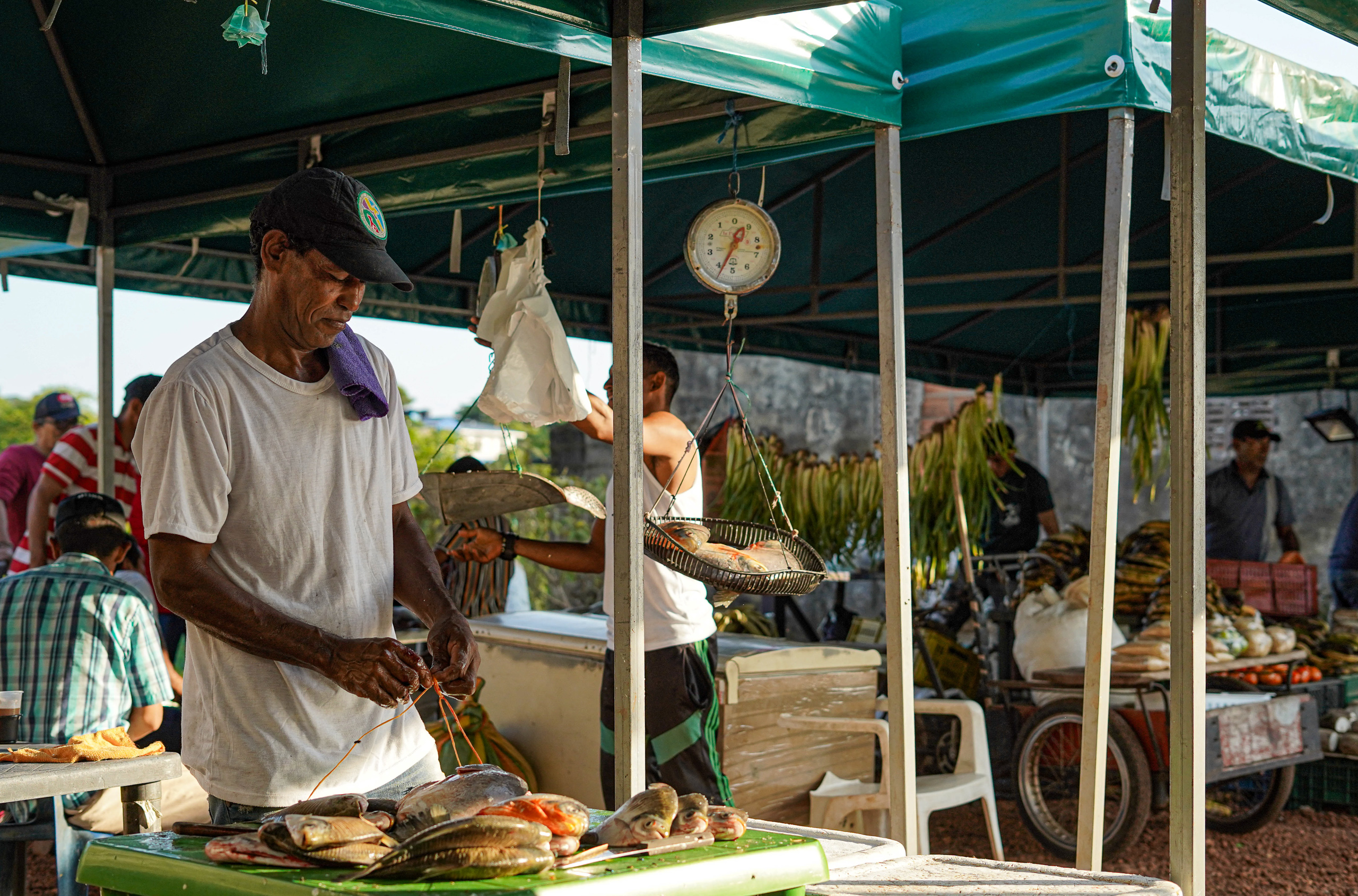

“Sometimes it’s whole days, whole weeks without power,” says Sonia Prada, a teacher and activist campaigning for improvements to the electricity service in Vichada. Along with other residents of Puerto Carreño, Prada has taken part in protests against the lack of electricity supply.
Advances in electricity distribution are occasional, such as the solar farm in Casuarito, in the rural outskirts of Puerto Carreño, inaugurated this May by the national government. The village’s 239 families, who previously had only eight hours of electricity a day, now have a continuous supply. “This has brought benefits to the development of the community,” said Jesús Hernán Acosta, president of the Casuarito Community Action Council.
The facility’s 810 solar panels, which operate from 6am to 10pm, are supplemented by a diesel generator at night – but power still does not reach everyone in the area.
Just a few metres from the solar plant is the Indigenous community of San Antonio. Here, 21 families live in precarious conditions, but only one of them has electricity, thanks to a single solar panel. “We only have this one solar panel, which is enough for one house,” said Joseito Libando, the community’s leader. “We have light here nine hours a day.”
To get around shortages in this part of the country, Colombia used to buy electricity from neighbouring Venezuela, whose infrastructure was more developed. But such cooperation was shaken in 2019, after a diplomatic crisis between the countries and a huge increase in electricity tariffs.
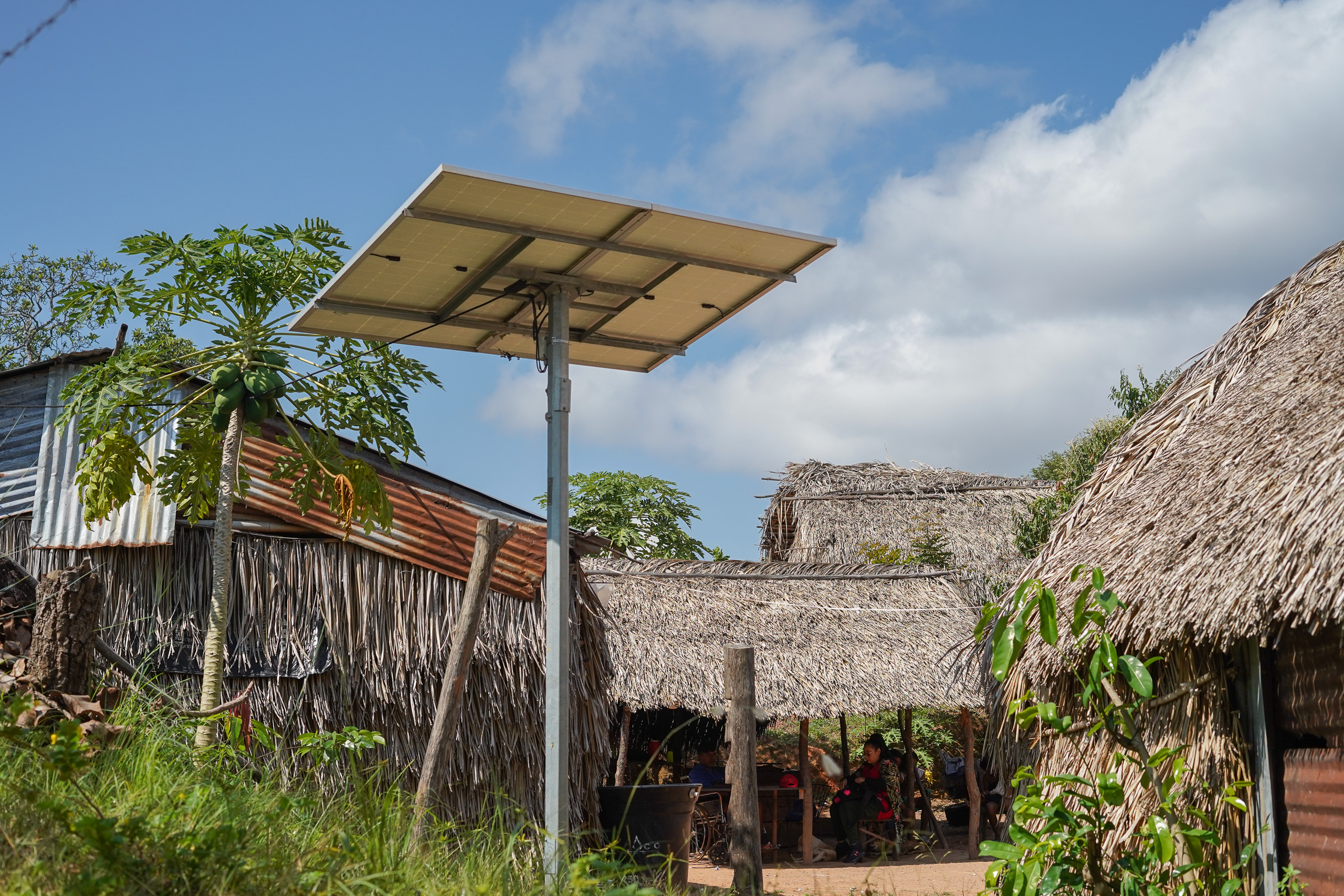
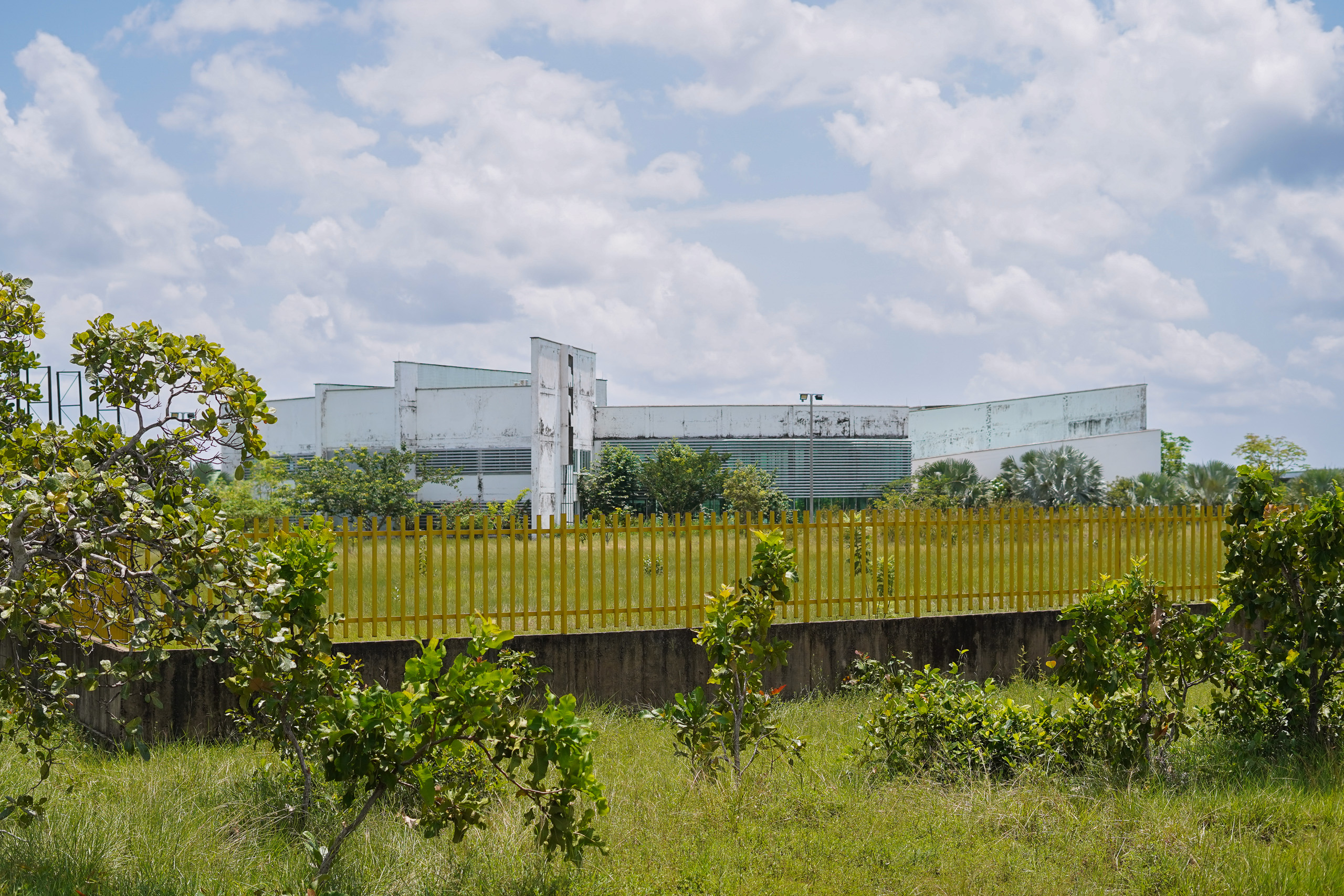
One of the main bets launched to boost Vichada’s energy sovereignty was the Renewable Energy Research Centre (Ciner). Designed to generate solar energy and act as a training centre, the project began construction more than a decade ago, but has never been put into operation. Its facilities are abandoned, shrouded in allegations of corruption and the loss of around COP 30 billion (around USD 7 million).
“It’s definitely a white elephant,” said Julio Cesar Hidalgo, a well-known local leader and rector of a school in Puerto Carreño. “It’s sad to see how abandoned it is.”
Pedro Salcedo Flores, headmaster of the María Inmaculada school in Puerto Carreño, is one of the main stakeholders in Ciner, since the institution has established partnerships so that students and teachers can train in renewable energies and take this knowledge back to their communities, many of which are Indigenous.
Despite successive broken promises, Flores still believes that he will see the centre fulfilling its purpose. “The idea is that they have this tool, and more than that, that they are well prepared to carry out the work of training in renewable energies, understanding that it is, in fact, a great alternative,” he says. “We hope that these young people will encourage their families to take advantage of solar energy.”
